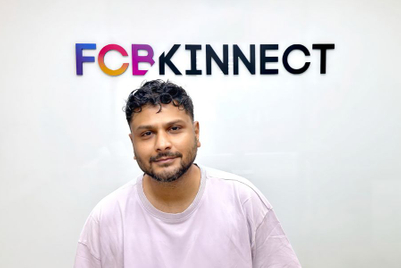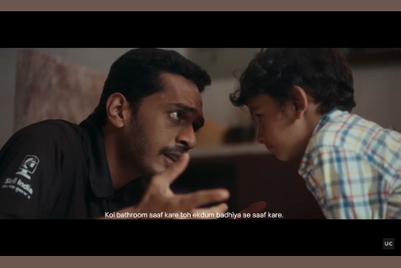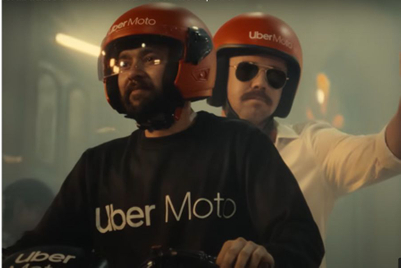
When award-winning novelist and screenwriter Anuja Chauhan embarked on ‘Brave New Art’ season 3, her initial vision was simple: a compelling murder mystery. But the real challenge lay in translating her traditionally layered storytelling into an AI-powered narrative.
“Through careful prompt engineering and persistent iteration, I found that sweet spot where technology enhances rather than overshadows the storytelling process,” she told Campaign.
This latest instalment of Lenovo’s ‘Brave New Art’ campaign, conceptualised by FCB Kinnect, aims to push the boundaries of AI-assisted creativity in brand storytelling. As India’s first AI-created film that aired on JioHotstar last December, the 12-minute thriller, powered by Lenovo’s Yoga Slim 7i Aura Edition, is being served as a case study in the evolving role of artificial intelligence (AI) in content creation.
The film recorded 38 million views—1.5x the planned 25 million—across platforms, proving that AI-led narratives have found their audience. While the numbers paint a pretty picture, it begs the question whether this signals a tipping point where AI-driven storytelling becomes a mainstay in brand campaigns. And if so, what does that mean for creative professionals navigating the fine line between machine-generated efficiency and human artistic nuance?
Lenovo’s goal was ambitious: 25 million views. What they got was far beyond expectations. As of January 10, 2025, the campaign reached 52 million reach on Meta, saw YouTube engagement surge to 7.1 million, and exceeded its Hotstar projection (3.56 million vs. planned 2.69 million). The 100% completion rate for Episode 1 alone hit 11.68 million views, while a Google-run campaign recorded a 42% view-through rate.

Chandrika Jain, director of marketing at Lenovo India, sees this as a testament to growing consumer appetite for AI-powered creativity. “Rather than replacing human ingenuity, AI is proving to be a powerful creative enabler. This season showcased how AI can remove barriers in content creation, making high-quality storytelling more accessible,” she told Campaign.
AI as co-creator, not a replacement
At an opulent hotel breakfast buffet, where whispered office secrets and carefree calorie indulgence mingle over clinking cutlery, every frame of the scene in the three-minute-long film A Lady is imagined by Chauhan and executed using AI. The guests, the glances, even the intrigue are all conjured by code, and not by castings calls.
Whether these AI-crafted personas can evoke the nuanced suspense of a classic whodunit remains up for debate. But what’s clear is that audiences are warming up to tech-infused storytelling, nudging brands to embrace innovation not just in message but in medium.
As AI continues to infiltrate the creative process, it prompts a more layered consideration—are we unlocking new creative frontiers, or slowly ironing out the wrinkles that make storytelling human and unpredictable? This question has become even more pertinent with ChatGPT’s recent venture into Ghibli-style imagery.
Over the past few days, this subject has sparked global fascination, while also igniting debates about its implications for artistic authenticity, creative ownership, and data privacy. Critics question whether AI-generated art enhances creativity or undermines the originality of human expression.
While AI accelerates production and unlocks new storytelling possibilities, it operates within the boundaries set by human intent. The technology itself lacks independent vision; its effectiveness depends entirely on the creator’s input.
Without human oversight, AI-generated content risks becoming formulaic, reinforcing patterns rather than breaking creative ground. The real challenge, then, is not just how brands use AI, but how they ensure it serves creativity rather than dictating it.
Balancing human emotion with AI precision
Beyond just assisting in execution, AI shaped the entire creative process for Brave New Art Season 3. Traditionally, filmmaking demands extensive resources—cameras, lighting, post-production—but AI streamlined the workflow. From generating visual storyboards to voice modulation, AI tools on the Lenovo Yoga Slim 7i AE enabled real-time refinements that might have otherwise taken weeks.
“AI wasn’t just a tool in this campaign—it became an active creative partner,” said Jain. One particularly surprising moment for the team was how quickly AI-generated visuals aligned with Chauhan’s intricate descriptions. “The AI helped generate detailed scene setups and refine voiceovers, allowing Anuja to focus purely on creativity rather than logistics,” she added.
A standout feature was AI-driven voice modulation, which adapted to match tone and context, adding unexpected emotional depth to the film. This highlights a significant shift: AI is no longer just a facilitator; it’s actively influencing artistic choices.
For Neville Shah, chief creative officer of FCB Kinnect, the approach to AI in storytelling is clear-cut. “AI is never the idea for us. It’s just a tool that empowers. The challenge was to highlight machine intelligence without letting it overtake the human element,” he explained to Campaign.
Advertising thrives on emotion and cultural nuance—things AI still struggles to fully grasp. Shah and his team ensured that Brave New Art remained rooted in human storytelling. “We made it a human story—a classic protagonist’s journey. Someone has a goal, obstacles arise, and AI steps in as a problem-solver. That’s storytelling at its core,” he added.
This sentiment was echoed in Chauhan’s experience. Used to rich, layered storytelling, she had to adapt her process to AI’s rigid outputs. “Every word in my prompts mattered. A slight tweak could drastically change the output. It was a partnership—AI didn’t just hand me a story; we worked together to craft it.”
While AI accelerated content generation, the human touch—whether in tweaking prompts, refining AI-generated scenes, or shaping the narrative’s emotional arc—remained essential. The takeaway? AI can assist, but it cannot (yet) replace the instinctive, deeply personal nature of storytelling.
The double-edged sword of AI storytelling
As AI cements itself in content creation, its role in marketing personalisation is also expanding. Lenovo has been integrating AI into its consumer engagement strategies—from tailored content recommendations to AI-driven dynamic ads.
“A Brand Lift Study on Hotstar showed a 6% increase in aided awareness, a 4% rise in brand favourability, and a 5% uplift in purchase intent,” Jain noted. Beyond ads, Lenovo’s AI-powered chatbots and sentiment analysis tools are helping refine real-time consumer interactions. With personalisation being a key differentiator, AI’s ability to craft highly targeted, data-driven campaigns makes it invaluable for brands aiming to build deeper connections with audiences.
While AI is revolutionising creative workflows, it raises an important question: Where do we draw the line between AI as a creative tool and AI as a creative decision-maker?

Shah is clear on this: “AI as a process tool is great. But empathy? That’s human. AI can’t replicate it.”
Chauhan, too, is wary of AI’s potential to homogenise storytelling. “With how fast everything is developing, AI makes hyper-personalisation easier. But if we all rely on similar datasets, could that lead to storytelling losing its distinctiveness?”
This tension—between AI’s efficiency and the irreplaceable spark of human creativity—will define the future of AI-driven content. While it offers unprecedented possibilities, creative professionals must ensure they remain in the driver’s seat, using AI as a collaborator rather than a crutch.
A new era for brand storytelling
The success of Brave New Art Season 3, based on the stats mentioned above, proves one thing: AI-powered storytelling is no longer an experiment—it’s here to stay. Lenovo, FCB Kinnect, and Chauhan have demonstrated that when harnessed effectively, AI can elevate narratives rather than dilute them.
AI’s future in creative industries isn’t about man versus machine; it’s about man with machine. Many brands, besides Lenovo, have already started integrating AI into their marketing and creative strategies. These include Heinz, Coca-Cola, Nike and Cadbury Celebrations.
The challenge, however, remains: How do creative professionals wield this technology without losing the raw, unpredictable brilliance that defines human storytelling?
Perhaps, as Chauhan suggests, “AI isn’t the idea—it’s the enabler.” The true test of its impact will be in how creators choose to use it. For now, the audience is watching—and they seem to like what they see.


.jpg&h=334&w=500&q=100&v=20250320&c=1)
.jpg&h=334&w=500&q=100&v=20250320&c=1)



.jpg&h=334&w=500&q=100&v=20250320&c=1)


.jpg&h=334&w=500&q=100&v=20250320&c=1)
.jpg&h=334&w=500&q=100&v=20250320&c=1)








